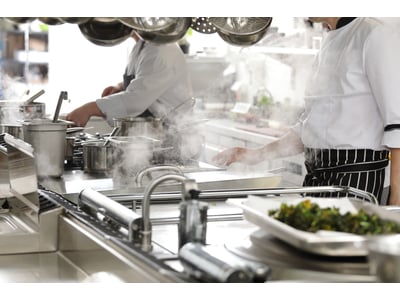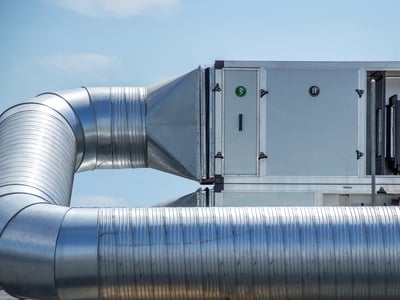Put clean indoor air on the menu at your restaurant – and minimise fire risk, eliminate odour nuisance and complaints, and increase customer loyalty by providing fresh, clean air.
Today, more and more people are going out to eat. They’re also rating their overall customer experience down to the most minute details. This increased traffic can bring in more profit, but also kitchen hazards. That’s why restaurants of all types need careful air management.
A busy commercial kitchen has quite different requirements than the “front of house” dining area, which requires a more comfortable, quiet ambience. In the kitchen, a high-rate restaurant ventilation system is used to remove heat from cooking processes and collect smoke, steam and oil mist.
This air is typically dumped into atmosphere. Moving such contaminated air through buildings and discharging to the atmosphere attracts various risks, including:
Commercial kitchens are highly ventilated to remove heat, smoke and steam. Careful treatment of the exhaust air and supply air is essential to minimise fire risk, eliminate odour nuisance and provide paying guests with good air quality.
To mitigate the risks, the best solution is an appropriate combination of air filtration that coalesces oil and grease, collects fine particles and finally removes the gases responsible for odour. Loadings of oil, grease, particulates and odour can be quite high in kitchen exhaust applications. After a successful installation, specified maintenance procedures must be followed to ensure ongoing effectiveness.
All the air that is removed from a kitchen and restaurant must be replenished. If not treated appropriately, this replacement outdoor air also brings associated risks to food hygiene, damage to finishes and furnishings, and of course the well-being of staff and diners. So, incoming air has got to be properly filtered to achieve high levels of indoor air quality (IAQ). For human protection, it is important that the smaller particle fraction, PM1, is effectively filtered with ePM1 filters according to ISO 16890.

Commercial kitchens are highly ventilated to remove smoke, grease and stream. Exhaust filtration is used to minimise the risk of duct fires and remove odour nuisance.

Customers want to eat at restaurants that control food safety and dining area cleanliness. Eliminate food preparation odours and particulates, and decrease the possibility of airborne food contamination and fire hazards from airborne oil vapors.

Protect people, processes, products and equipment while keeping maintenance and energy costs low by keeping air handling units unclogged.